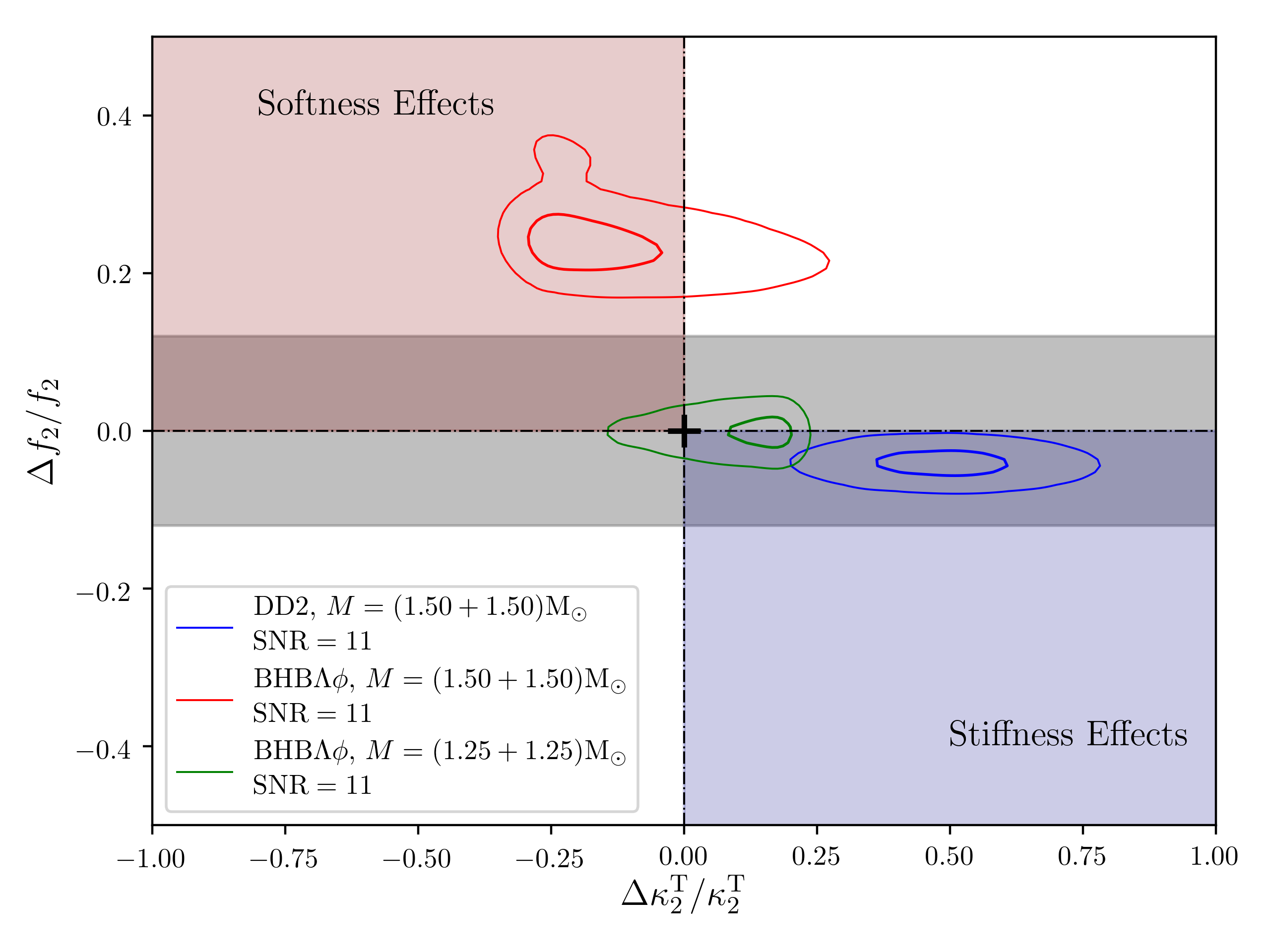Pre/post-merger consistency test for gravitational signals from binary neutron star mergers
Matteo Breschi, Gregorio Carullo, Sebastiano Bernuzzi
Preprint on arxiv:2301.09672 [gr-qc]
Published:
Gravitational waves from binary neutron star (BNS) mergers can constrain nuclear matter models predicting the neutron star’s equation of state (EOS). Matter effects on the inspiral-merger signal are encoded in the multipolar tidal polarizability parameters, whose leading order combination is sufficient to capture to high accuracy the key features of the merger waveform (e.g. the merger frequency). Similar EOS-insensitive relations exist for the post-merger signal and can be used to model the emission from the remnant. Several works suggested that the appearance of new degrees of freedom or phase transitions in high-density post-merger matter can be inferred by observing a violation of these EOS-insensitive relations. Here, we demonstrate a Bayesian method to test such an EOS-insensitive relation between the tidal polarizability parameters (or any other equivalent parameter) and the dominant post-merger frequency, using information either up to merger or from the post-merger signal. Technically, the method is similar to tests of General Relativity with binary black holes that verify the inspiral-merger-ringdown consistency. However, differently from the latter, BNS pre/post-merger consistency tests are conceptually less informative and they only address the consistency (or the breaking) of the assumed EOS-insensitive relation. Specifically, we discuss how such tests cannot conclusively discriminate between an EOS not respecting such relation and the appearance of new degrees of freedom (or phase transitions) in high-density matter.

